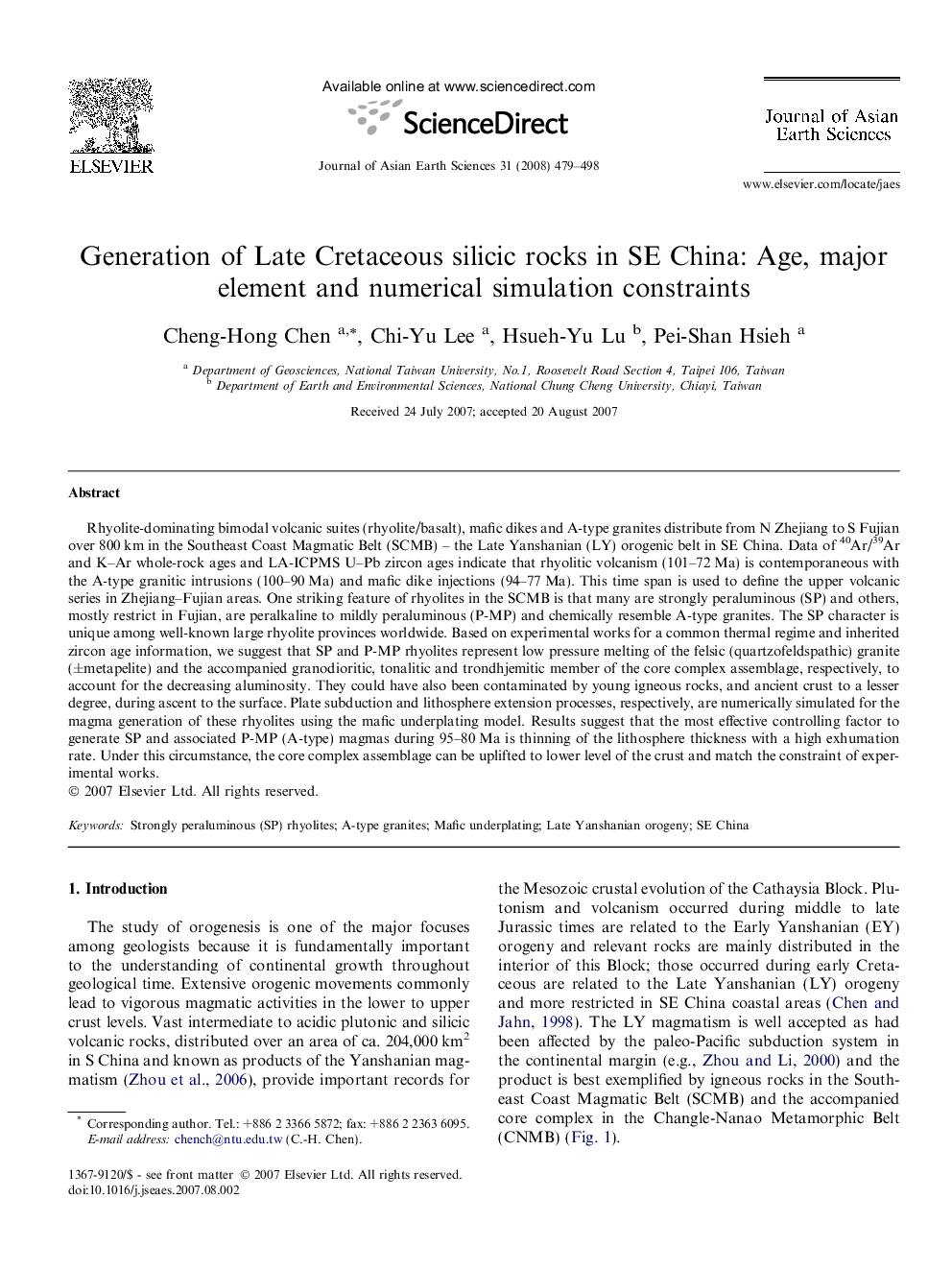| کد مقاله | کد نشریه | سال انتشار | مقاله انگلیسی | نسخه تمام متن |
|---|---|---|---|---|
| 4732500 | 1640436 | 2008 | 20 صفحه PDF | دانلود رایگان |

Rhyolite-dominating bimodal volcanic suites (rhyolite/basalt), mafic dikes and A-type granites distribute from N Zhejiang to S Fujian over 800 km in the Southeast Coast Magmatic Belt (SCMB) – the Late Yanshanian (LY) orogenic belt in SE China. Data of 40Ar/39Ar and K–Ar whole-rock ages and LA-ICPMS U–Pb zircon ages indicate that rhyolitic volcanism (101–72 Ma) is contemporaneous with the A-type granitic intrusions (100–90 Ma) and mafic dike injections (94–77 Ma). This time span is used to define the upper volcanic series in Zhejiang–Fujian areas. One striking feature of rhyolites in the SCMB is that many are strongly peraluminous (SP) and others, mostly restrict in Fujian, are peralkaline to mildly peraluminous (P-MP) and chemically resemble A-type granites. The SP character is unique among well-known large rhyolite provinces worldwide. Based on experimental works for a common thermal regime and inherited zircon age information, we suggest that SP and P-MP rhyolites represent low pressure melting of the felsic (quartzofeldspathic) granite (±metapelite) and the accompanied granodioritic, tonalitic and trondhjemitic member of the core complex assemblage, respectively, to account for the decreasing aluminosity. They could have also been contaminated by young igneous rocks, and ancient crust to a lesser degree, during ascent to the surface. Plate subduction and lithosphere extension processes, respectively, are numerically simulated for the magma generation of these rhyolites using the mafic underplating model. Results suggest that the most effective controlling factor to generate SP and associated P-MP (A-type) magmas during 95–80 Ma is thinning of the lithosphere thickness with a high exhumation rate. Under this circumstance, the core complex assemblage can be uplifted to lower level of the crust and match the constraint of experimental works.
Journal: Journal of Asian Earth Sciences - Volume 31, Issues 4–6, 10 January 2008, Pages 479–498